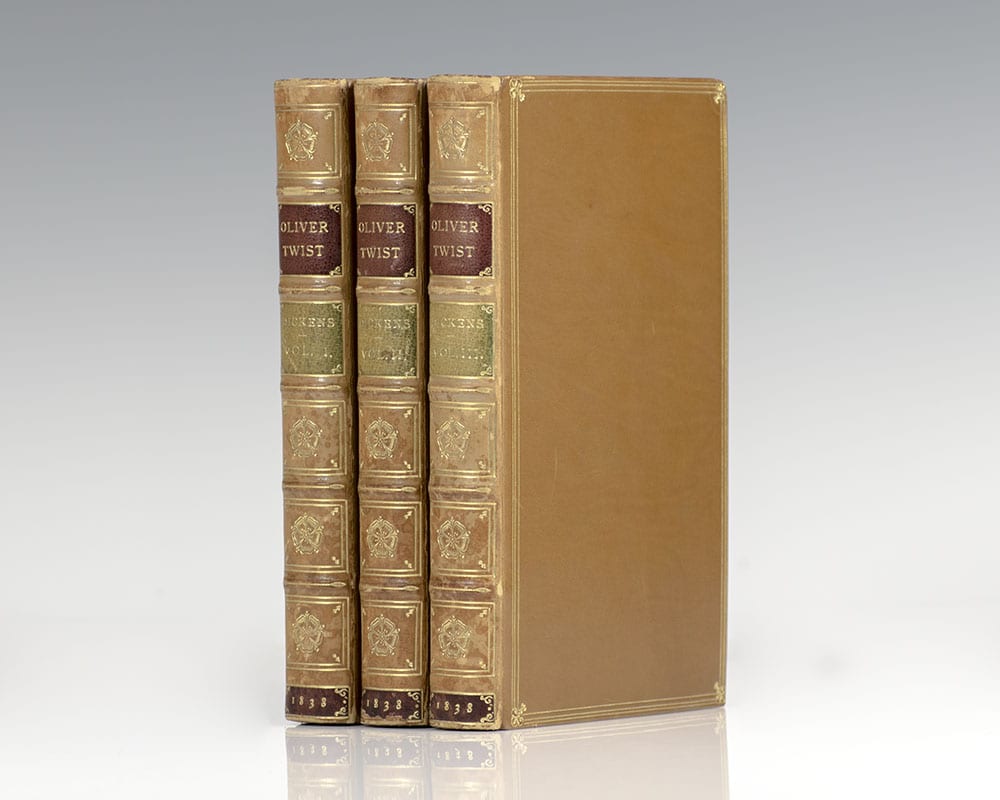A Tale of Two Cities.
- You cannot add "Bleak House." to the cart because the product is out of stock.
Scarce complete First edition, first issue of Charles Dickens' A Tale of Two Cities; in the original monthly parts; with three variant issues of part 1
A Tale of Two Cities.
DICKENS, Charles.
$25,000.00
Item Number: 131460
London: Chapman and Hall, June-December 1859.
First edition, first issue of one of Dickens’ most enduring works, with p.213 in part 7/8 mispaginated “113”, and signature mark ‘b’ present on List of Plates at end, etched frontispiece, additional title and 14 plates by “Phiz” (Hablot K. Browne). Octavo, original blue-green wrappers. Complete with all the advertisements called for by Hatton & Cleaver, and the two rare slips in parts 1 and 5. Includes three variant issues of part 1, one with Morison’s ‘premises’ advert, the second with Morison’s ‘lion’ advert, and the third with the rare French version of the Morison’s ‘lion’ advert. In near fine condition. A scarce and desirable complete set in original parts. Housed in a custom folding clamshell box.
The most famous and possibly the most popular of Dickens's novels, A Tale of Two Cities shows a master of dramatic narrative extracting gold from the ore of history. If the bloody tableau of the French Revolution were not in itself sufficient for a dozen novels, Dickens added to it a professional resurrectionist, an authentic ogress, and an antihero as convincingly flawed as any in modern literature. “Dickens had always admired Carlyle’s History of the French Revolution, and asked him to recommend suitable books from which he could research the period; in reply Carlyle sent him a ‘cartload’ of volumes… So great was [Dickens’] enthusiasm for the story that it had indeed ‘taken in possession’ of him… The force of the novel springs from its exploration of darkness and death but its beauty derives from Dickens’ real sense of transcendence, from his ability to see the sweep of destiny” (Ackroyd, 858). The last of Dickens’ books to be illustrated by H.K. Browne (“Phiz”), with 16 engraved plates by him. “Browne, for 23 years responsible for all the etchings which had so successfully embellished these [Dickens’] books, produced his last drawings for the present work… Bradbury and Evans, the printers of all and publishers of five of Dickens’ works as issued in monthly parts, had ceased to act in this dual capacity after completion of Little Dorrit… [resulting] in the return of Chapman and Hall as publishers of this and all succeeding works” (Hatton & Cleaver, 333).










